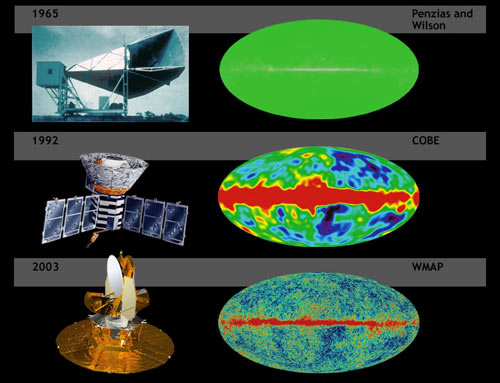 |
Cosmic Microwave Background Radiation |
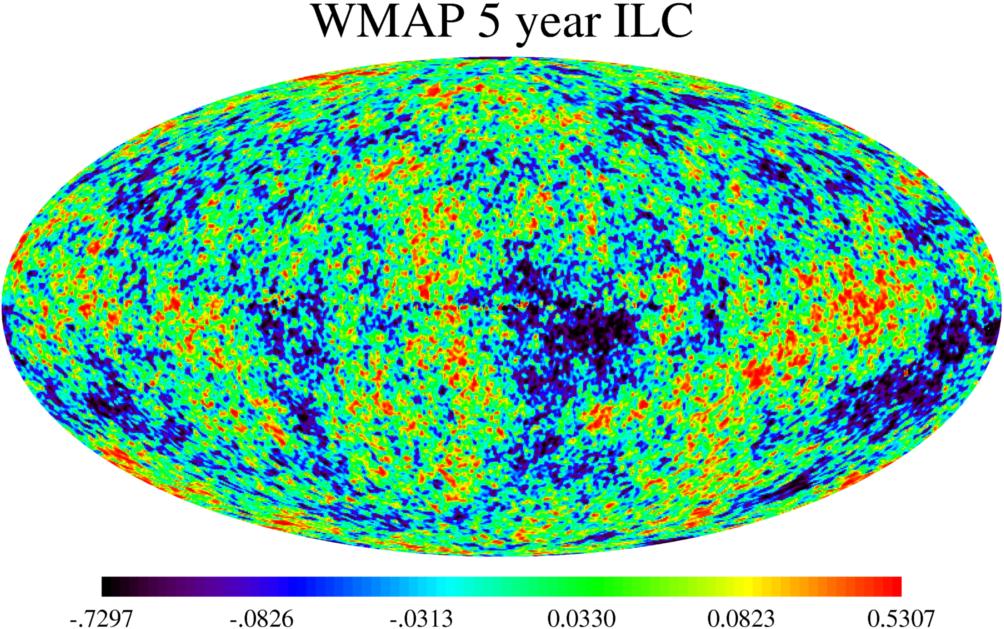 |
 |
Cosmic Microwave Background Radiation |
 |
The CMBR has properties:
The dipole anisotropy arises due to the motion of the Milky Way galaxy through the Universe. The Local Group of galaxies which contains the Milky Way is moving toward Hydra with a speed of around 500 kilometers per second.
 |
|
The low-amplitude, small-scale fluctuations seen in the CMBR indicate the sizes of the fluctuations which eventually led to the observed structure of the Universe at the time the CMBR formed, roughly 380,000 years after the Big Bang. The existence of the flucutations is thus good but may turn out to be rather vexing at the same time.
Presumably such structures were formed by the mutual gravitational attraction of the particles which make up the galaxies. A similar argument can be made for clusters of galaxies, clusters of clusters of galaxies, voids, ...
The upshot is that we can figure out roughly how long the formation process should take, and how large fluctuations need to be around the Epoch of Recombination when the CMBR was formed.
The current size of structures in the Universe are not consistent with the measured smoothness of the CMBR if normal matter dominates the Universe. However, if Dark Matter is included then things can be made right.
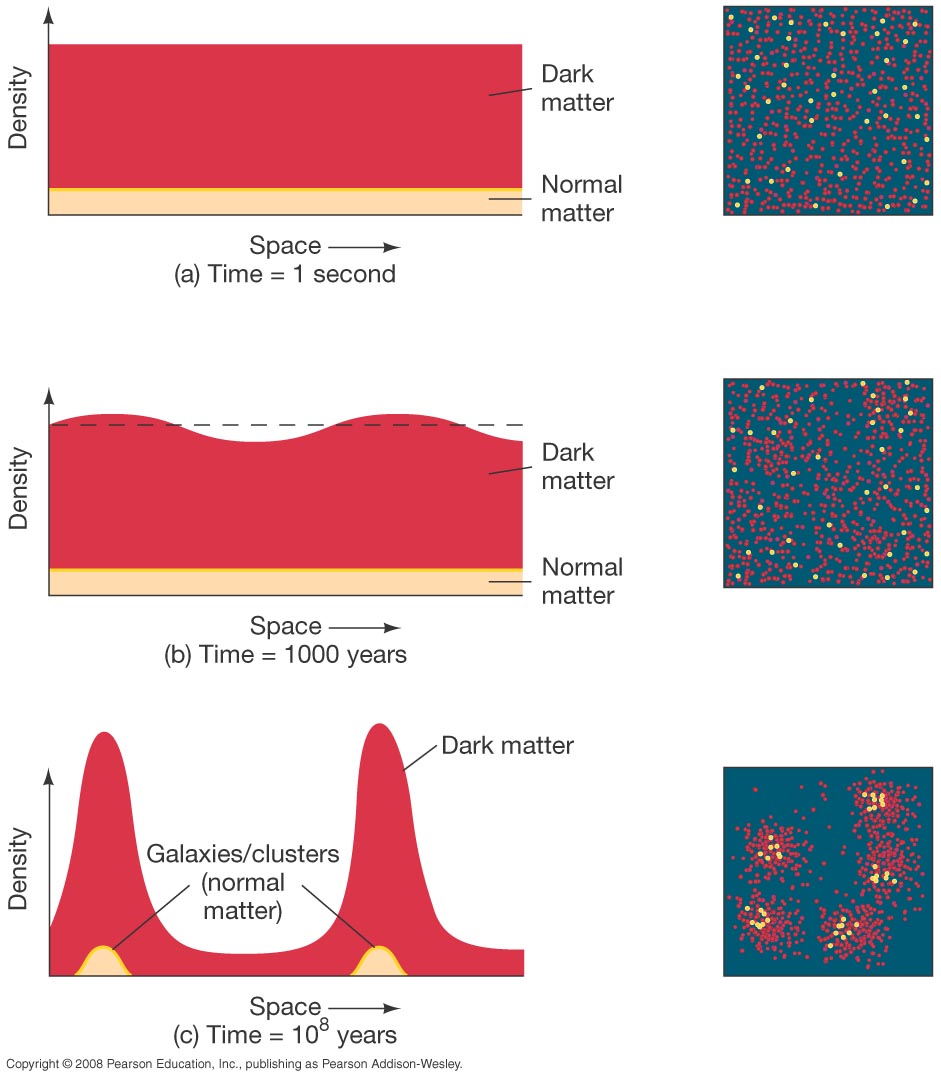 |
At early times, there are no large fluctuations. As time goes by, fluctuations driven by inflation start to grow. If there is a lot of Dark Matter compared to normal matter, then these fluctuations may be large because clumping of dark matter is not inhibited by the intense energy of the radiation; also, because it does not strongly affect light, the radiation of the Universe is not strongly affected by Dark Matter! As the fluctuations (both dark matter and normal matter) grow, structure will be produced without strongly affecting the light, that is, the CMBR when it forms at 380,000 years! The stucture of the current Universe strongly constrains the balance between Dark Matter and normal matter in the Universe. |
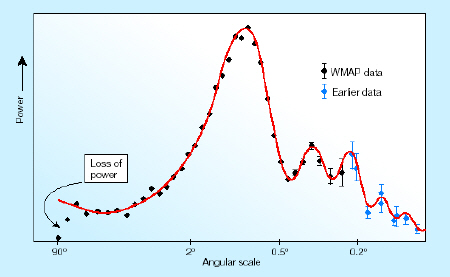 |
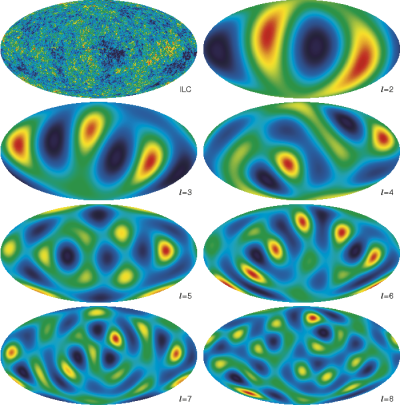 |
The left panel shows the CMBR and a blow-up of a small portion of the CMBR. You can see much fine structure in the temperature of the CMBR. It is fairly random looking. Note--although the plots make the temperature fluctuations look large, they are actually quite small less that 0.0001 Kelvin compared to 2.73 Kelvin for the average CMBR. The middle and right panels show how cosmologists make sense of patterns in the fluctuations. For example, consider the right hand panel. The figure in the upper left hand corner shows the full WMAP image of the CMBR. In the picture to its right, notice that the small-scale (rapid changes are smoothed over) leaving only a more gradual changing component. The smoothing, for example, can be performed by running a filter over the image and averaging the CMBR with the filter,

This can reveal structure; structure in the CMBR is apparent when one does this and then compares the two images. The other six images do the same exercise except that each smooths out different fluctuation to reveal how the CMBR looks on different scales. The right hand panel shows a neat way to look at the CMBR. The central panel is another way to represent the picture in the right panel. In this case, the center panel shows which smoothed pictures contribute the most and least to the overall picture of the CMBR.
The next step in the WMAP analysis of the CMBR is take all of the proposed models for the evolution of the Universe; open, closed, flat spacetimes, universes filled with dark matter, normal matter, dark energy or combinations of the above, inflationary universes, universes without inflation, steady-state universes, and any other models one can conjure up. The test then becomes to see which models can reproduce the snapshot of the Universe at 380,000 years, the CMBR, provided by WMAP.
|
 |
 |